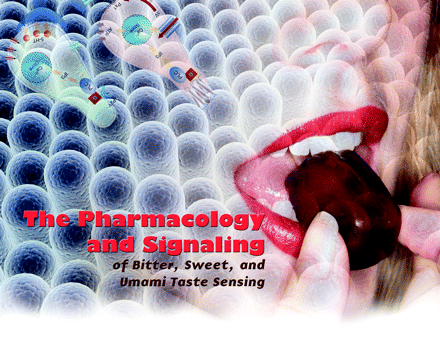The Pharmacology and Signaling of Bitter, Sweet, and Umami Taste Sensing
Abstract
Over the last decade, many of the molecular components that mediate the transduction of taste signaling have been elucidated. The chemosensory receptors for taste have been identified as G protein–coupled receptors (GPCRs) and ion channels that are expressed on the surface of highly specialized taste sensory cells. Tastant molecules act as agonists, binding to and stabilizing active conformations of receptors, resulting in the initiation of signal transduction cascades. Taste signaling, therefore, should be amenable to the methods of pharmacology. This review focuses on the GPCR-mediated signaling of bitter, sweet, and umami tastes and emphasizes the opportunities for pharmacologic evaluation.

- © American Society for Pharmacology and Experimental Theraputics 2007



